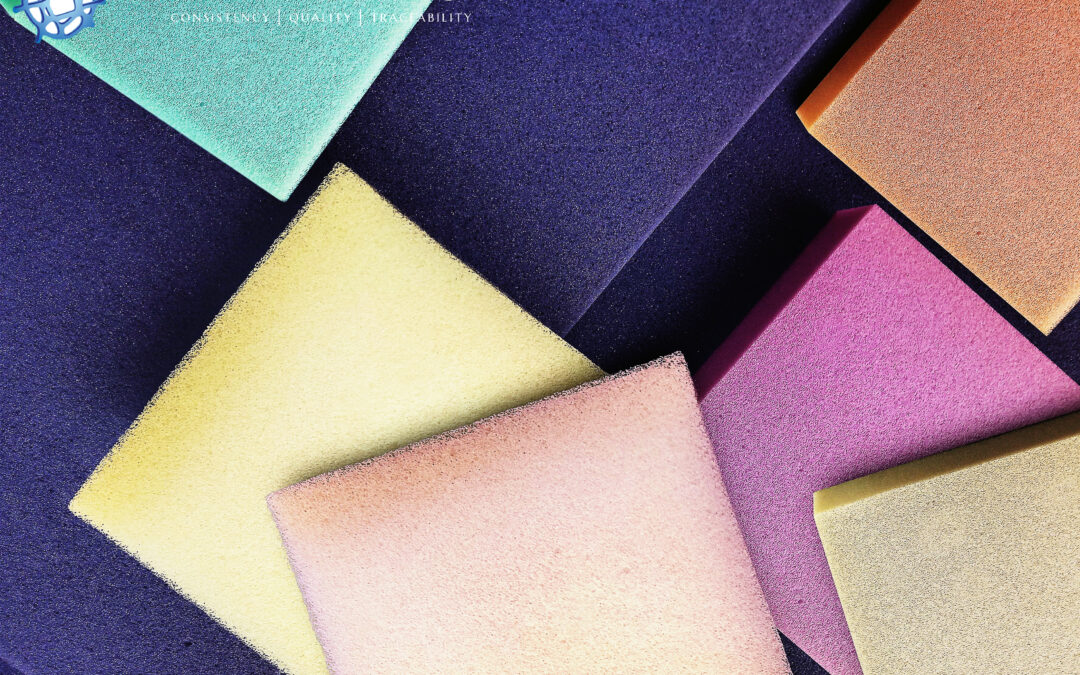Polyurethane (PU) foam has been a popular material used in manufacturing various medical devices. This material has a wide range of properties and revolutionized patient care by advancing medical innovation. In this comprehensive breakdown, the unique properties of PU foam, such as hydrophilicity/hydrophobicity, softness/roughness, coarseness/fineness, porosity/absorbency, insulation, pyrogen-free attributes, non-cytotoxicity, and reticulation are examined. Additionally, we explore the manufacturing process of PU foam and its wide-ranging medical applications, showcasing the remarkable potential of this versatile material in the healthcare sector.
Properties of Polyurethane Foam:
Hydrophilic/Hydrophobic
PU foam can be manipulated to have either hydrophilic or hydrophobic properties. Hydrophilic PU foams absorb and retain water, whereas hydrophobic repels water. These characteristics can be achieved by modifying the chemical structure of the foam during the manufacturing process.
Soft/Rough
The softness or roughness of PU foam can be controlled by varying the formulation and processing conditions. The cell structure and incorporating chemical reactions make softer foams that can be used for applications requiring comfort and flexibility. The cell structure of rougher foams can be engineered in situations where the ability to withstand the wear and tear of friction is critical.
Course/Fine
The coarseness or fineness of PU foam refers to its cellular structure, which can be adjusted during the manufacturing process. Large, open cells make for a course foam. Small cells with a denser structure result in a finer foam. These choices can be made when defining your application.
Porous/Absorbent
The porosity and absorbency of PU foam are closely related to its hydrophilic/hydrophobic properties. Highly porous foams have a larger surface area, allowing them to absorb more fluid, while less porous foams are less absorbent. These properties can be tailored by altering the manufacturing process and the foam’s chemical composition.
Insulative
PU foam is an excellent insulator due to its cellular structure, which traps air and minimizes heat transfer. This property makes it ideal for applications requiring thermal management, such as temperature-sensitive medical devices.
Non-Cytotoxic
Non-cytotoxic PU foams are designed to be compatible with living tissue and not cause harm to cells. This property is critical for medical devices that come into direct contact with the body.
Reticulated/Non-Reticulated
Reticulated PU foams have an open-cell structure, allowing for greater airflow and fluid transport. Non-reticulated foams have a closed-cell structure, providing a more rigid and less permeable material. The choice between reticulated and non-reticulated foams depends on the specific requirements of the medical application.
Medical Applications of PU Foam:
Wound Dressings
Hydrophilic PU foams are commonly used as wound dressings due to their excellent absorbency and ability to maintain a moist environment, promoting faster healing. If you would like to learn more about PU foam and wound care, click here.
Orthopedic Supports and Positioners
Soft, flexible PU foams are ideal for orthopedic support and orthopedic positioners to provide stable, comfortable support for patients during orthopedic procedures or recovery. Foamtec Medical can develop custom orthopedic positioners in various shapes and sizes.
Surgical Sponges
Highly absorbent and reticulated PU foams are used as surgical sponges to effectively remove fluids during procedures while reducing the risk of infections.
Respiratory Devices
Reticulated PU foams are used in respiratory devices like filters and humidifiers, providing efficient airflow and moisture retention to ensure proper function.
Insulation for Temperature-Sensitive Devices
Insulative PU foams are utilized in temperature-sensitive medical devices, such as cold chain transportation containers and incubators, maintaining stable temperatures and protecting against thermal fluctuations.
Diagnostic Swabs:
PU foam has been proven to be an excellent choice for diagnostic swabs due to its softness, flexibility, and non-cytotoxic nature. Foam swabs ensure patient comfort and minimize irritation during sample collection. The porous structure allows for efficient sample collection and release that increases accuracy and reliability for diagnostic tests.
Polyurethane foam’s versatility in terms of its properties, coupled with its biocompatibility, has made it an invaluable material in the medical field. Foamtec Medical, a pioneer in PU foam manufacturing, specializes in creating customized solutions for a wide array of medical applications. By leveraging their expertise, Foamtec Medical ensures that their foam products are never off-the-shelf and are always purpose-built to meet specific requirements. To learn more about Foamtec Medical’s innovative capabilities and how they can benefit your medical application, contact us today!

